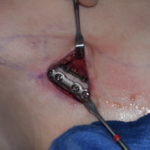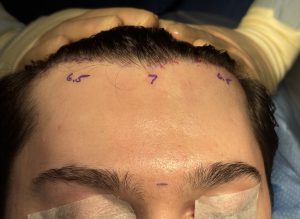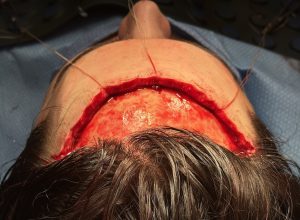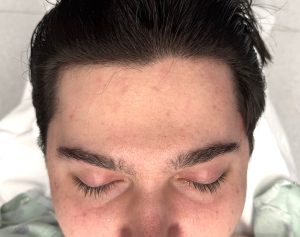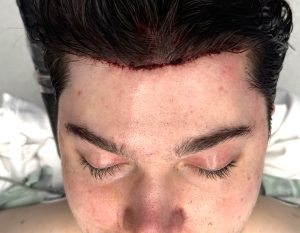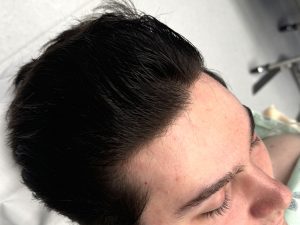Background: One important dimension of the forehead is it’s vertical length as defined by the distance between the eyebrows to the frontal hairline. This distance is obviously influenced significantly by the location of the frontal hairline which can be quite high in many men (or absent) and in some women as well. Presuming one has a hairline that is unaffected by hair loss the typical acceptable vertical forehead length is no greater than 6.5 cm. Greater than this length will universally be perceived as a long forehead by most.
Shortening the long forehead can only be done by relocation of the frontal hairline. This can be done by either hair transplants or surgical frontal hairline relocation. Each method has their advantages and disadvantages. Hair transplants are scarless but often require multiple procedures to get in adequate density along the hairline. The frontal hairline advancement creates an immediate result with the density that is identical to the existing frontal hairline. Despite these advantages the trade off to the frontal hairline advancement is the resultant scar along the hairline as well as limitations of how much it can be advanced in some patients.
Before performing a frontal hairline advancement it is first important to determine how much lowering the patient desires. From this information it can then be determined if such a frontal hairline movement is possible given the thickness of the scalp. The thicker the scalp is the more it can be released and brought forward due to greater elasticity of the tissues. While there is no way to know exactly how much the scalp can be moved one indicator his hair and skin pigmentation. The more skin pigment and darker the hair is the scalp is likely thicker and can achieve a greater amount of hairline lowering.
The one obvious disadvantage to a frontal hairline advancement is the scar. The key to a good frontal hairline scar result is to ensure that it is not closed under undo tension. On the one hand the patient usually wants the most advancement possible but this can come at the price of scar widening if intraoperative maneuvers are not done to relieve the tension on the scar line. A good intraoperative technique to incisional tension is to fix fix the front hairline advancement to the bone. By securing the galea of the advanced hairline to the bone excess attention is avoided on the incisional closure.
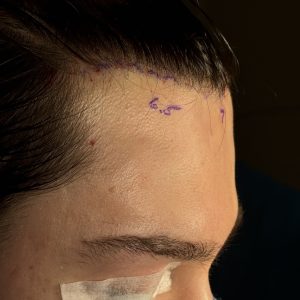
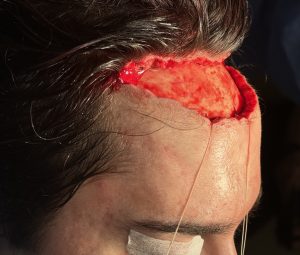
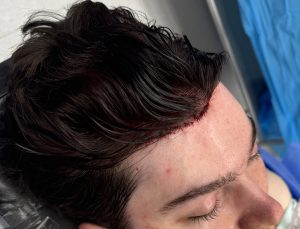
Hairline advancements in men pose one consideration not seen in most women. Will their frontal hairlines be permanent or will they undergo recession due to hair loss leaving the scar completely exposed. Given that many frontal hairline advancements are done in younger patients this is an important but as yet unknown potential long-term sequelae.
Key Points:
1) The vertically long for head can be reduced by a frontal hairline advancement which offers an immediate result with good hair density.
2) To optimize the hairline scar the advanced forehead flap should have bone fixation to alleviate incisional tension.
3) How much the frontal hairline can be advanced is directly influenced by the thickness of the scalp and skin and hair pigmentation.
Dr. Barry Eppley
World-Renowned Plastic Surgeon


